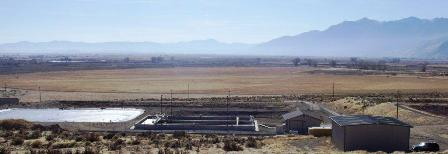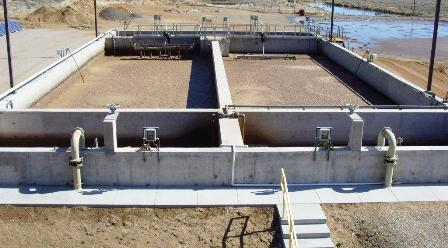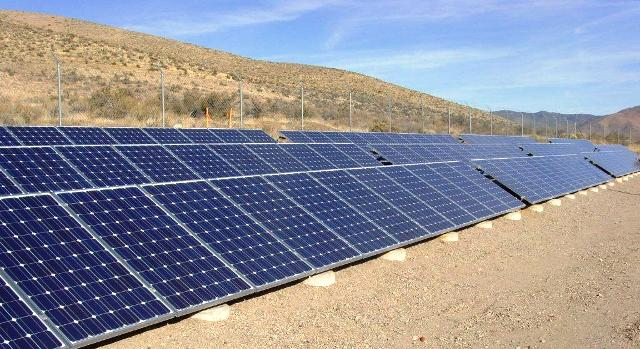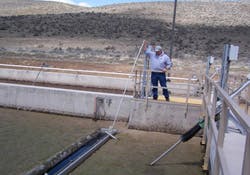Sewer
Sewer & Water Rate Schedule
| Sewer & Water Rate Schedule | |
|---|---|
| Sign Up Fee (New Accounts Only) | $15.00 |
| Sewer Rate (monthly) | |
| -Flat | $46.00 |
| -Storm Water Management Fee | $1.00 |
| Water & Sewer Connection Fee Residential Single Family Dwelling | |
| -Water | $5,130 |
| -Sewer | $5,130 |
With each and every flush some residents are doing something that could cost them and the district a lot of money. We are talking about those so-called "flushable" wipes. Despite what manufacturers claim, the wipes even the one that say flushable, do not dissolve. They get tangled in pumps and pipes and clog them. The wipes are not biodegradable so they do not break down in sewage systems. This has become a national epidemic; sewer agencies all over the country are experiencing the same problem. A consumer reports study tested several brands of wipes labeled flushable and found that, while toilet paper disintegrated after about 8 seconds, many wipes still hadn't broken down after 30 minutes of agitation. We are still experiencing some mechanical issues with pumps at our sewer lift stations. The pumps are being plugged due to a heavy load of flushable baby wipes, adult wipes and disinfectant/cleaning wipes being flushed into our system. This is diminishing the pumping capacity of the pumps. Please refrain from flushing any foreign objects into the sewer system. No wipes in the pipes. Thank you for your cooperation in this matter.
For Commercial Connection Fees, click on "Ordinances & Policies", click on "Policies" and select Commercial Sewer Service Policy.
- To set up a new sewer and water account, please select the appropriate form listed below or contact the main office at (775) 267-2805.
- Questions regarding billing or status on your current account, please contact the main office at (775) 267-2805.
- For your convenience, a payment drop box is located directly in front of the main office.
Indian Hills Wastewater Treatment Plant
The Indian Hills Wastewater treatment plant was first put into service in 2000. Our plant is a Intermittent Cycle Extended Aeration System which uses fine air diffusers to provide Dissolved oxygen to the micro-biology. At maximum capacity the plant can treat 600,000 gallons a day, but currently we are treating approximately 300,000 gallons daily.








Our treated effluent water is also stored by Sunridge Golf Course (SGC) for irrigation, when they need irrigation water we start sending it from our holding ponds to them through a gravity flow pipeline. On its way to the golf course it’s routed through a chlorine system, chlorine (sodium hypochlorite) is added to kill bacteria to a level that is regulated by the Nevada Department of Environmental Protection, that level is two parts per million or less, we monitor that effluent water very closely. We deliver approximately 120,000,000 gallons a year. Indian Hills and SGC have a fifty year agreement which gives us a place to dispose of our effluent while serving the Golf Course with much needed irrigation water.
We have recently completed several upgrades to our facility. On December 16, 2011 our solar system went online, we have seen an average cost savings of $500. a month, we also upgraded the headwork’s with newer equipment, which is designed to clean the raw sewage water of inorganics and organics, wastewater is made up of about 95% water, the rest is solids such as inorganics and organics, after this process is completed the raw sewage is sent to the Sequential Batch Reactor (SBR). After being treated in the SBR system it is sent to the newly added dewatering system which removes the water from the solids, sends the clean water back into the treatment system, while the solid material is placed in a trailer and hauled to Bently Ranch, where it is mixed with mulch and used as fertilizer on their fields.
On December 16, 2011 our solar system went online, we have seen an average cost savings of $500.00 a month.
Frequently Asked Questions:
Wastewater is made up of about 95% water, the rest if solids such as organic and inorganic material that are carried in the system. Wastewater coming from your home or business into the treatment plant is called influent water, wastewater after it is treated and leaving the plant is called effluent water.
I explained above what effluent water is and there are many ways that it is processed. At IHGID we have a SBR or sequential batch reactor that uses extended aeration, with air that cycles on and off. That air provides a certain amount of dissolved oxygen to keep the microorganisms happy and busy cleaning up the waste. After a certain amount of time and treatment the water becomes clear and is then discharged to a primary pond. When this pond hits a certain level, a pump comes on and moves the water to holding ponds where we keep it stored until it can be used. Our effluent water is used by Sunridge Golf Course for irrigation, so when they need water we start sending it to them through gravity pipelines. On the way to the golf course it is routed through a chlorine system and sodium hypochlorite is added to kill bacteria to a level that is regulated by the Nevada Department of Environmental Protection, that level is 2 parts per million or less, so I do monitor that effluent water very closely.
Our Wastewater plant is about 110 acres, not a lot is developed about 5 acres and that is where the plant and office are and about a half acre for the headworks. Hopefully soon we will have more developed with the addition of a sludge dewatering system.
We have 6 storage ponds and 1 primary pond, combined these ponds hold roughly 34,000,000 gallons of water, and they are completely full after winter storage.
Sewer Forms
Will Serve Policy03162011.pdfAnnexationPolicy2016.pdf

